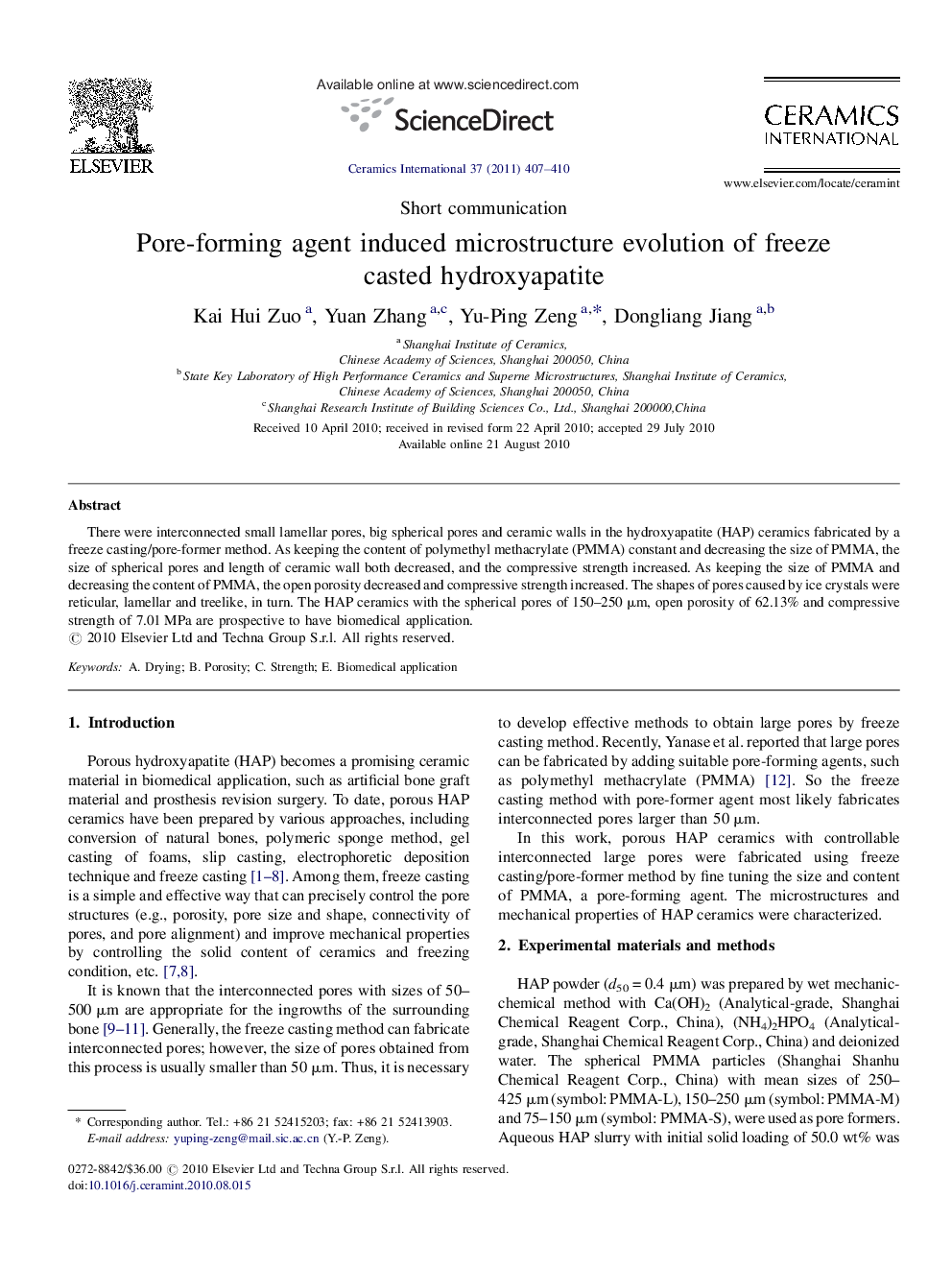| Article ID | Journal | Published Year | Pages | File Type |
|---|---|---|---|---|
| 1464011 | Ceramics International | 2011 | 4 Pages |
There were interconnected small lamellar pores, big spherical pores and ceramic walls in the hydroxyapatite (HAP) ceramics fabricated by a freeze casting/pore-former method. As keeping the content of polymethyl methacrylate (PMMA) constant and decreasing the size of PMMA, the size of spherical pores and length of ceramic wall both decreased, and the compressive strength increased. As keeping the size of PMMA and decreasing the content of PMMA, the open porosity decreased and compressive strength increased. The shapes of pores caused by ice crystals were reticular, lamellar and treelike, in turn. The HAP ceramics with the spherical pores of 150–250 μm, open porosity of 62.13% and compressive strength of 7.01 MPa are prospective to have biomedical application.
